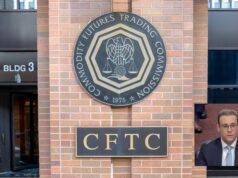The crypto industry has faced staggering losses of $1.19 billion in the first half of 2024 due to high-profile security breaches. These incidents, including sophisticated phishing attacks and private key compromises, underscore the urgent need for enhanced security measures and regulatory interventions. As the industry grapples with these challenges, stakeholders advocate for robust solutions to protect digital assets.
Major Security Breaches
The most significant breaches, as detailed in CertiK’s report, involve high-profile targets such as the DMM Bitcoin hack, resulting in a $304 million loss, and the BtcTurk attack, which cost $90 million. These incidents highlight the persistent vulnerabilities within the crypto ecosystem, despite advancements in technology and security protocols.
Urgent Need for Enhanced Security
The recurring nature of these attacks has prompted a call for more stringent security practices. One primary recommendation is the widespread adoption of multifactor authentication (MFA). MFA adds an extra layer of security by requiring users to provide multiple forms of identification before accessing their accounts. That makes it significantly harder for unauthorized parties to gain access.
Additionally, the report emphasizes the importance of regular security audits and continuous monitoring of blockchain networks. These measures can help detect and mitigate threats before they result in substantial losses. Enhanced encryption techniques and secure private key management are also crucial in safeguarding digital assets.
>>> Read more: Crypto Crime 2023 – Chainalysis Report
Regulatory Interventions on the Horizon
Regulatory bodies started to take action in response to the alarming increase in security breaches. The introduction of the FIT21 bill aims to enhance consumer protections and support innovation within the crypto sector. This bill proposes stricter security requirements for crypto exchanges and custodial services, ensuring they implement robust security measures to protect user funds.
Industry experts believe that regulatory interventions will play a critical role in establishing a safer and more resilient crypto ecosystem. However, they also caution that regulations must strike a balance between security and innovation to avoid stifling the growth of this dynamic industry.
Stakeholder Advocacy and Community Response
As the threat landscape evolves, stakeholders across the crypto industry advocate for a collaborative approach to security. This includes sharing threat intelligence, developing industry standards, and fostering a culture of security awareness among users. If the community works together, they can build a more robust defense against cyber threats.
Several industry leaders have already taken proactive steps to enhance their security frameworks. For example, some exchanges have invested in advanced security technologies, such as AI-driven threat detection systems, to identify and neutralize potential threats in real time.
Conclusion
The $1.19 billion in losses in the first half of 2024 due to security breaches remind us of the persisting vulnerabilities within the crypto industry. Technological advancements and regulatory measures are crucial in addressing these challenges, but a collective effort from all stakeholders is essential to safeguard the future of digital assets. Enhanced security practices, regulatory interventions, and community collaboration will be key in building a resilient and secure crypto ecosystem.
By addressing these compliance failures, regulators aim to bolster the integrity of the financial system. Ensuring that institutions engaged in cryptocurrency transactions are held to high standards of accountability and transparency is paramount. As the crypto industry continues to evolve, the lessons learned from these security breaches will be crucial in shaping a secure and compliant ecosystem for digital finance.
Readers’ frequently asked questions
What specific security measures can individuals take to protect their cryptocurrency assets?
Individuals can enhance their cryptocurrency security by implementing multifactor authentication (MFA). That requires multiple forms of verification before access is granted. Other crucial steps include the use of hardware wallets for storing private keys and regular software updates to patch vulnerabilities. Be cautious of phishing attempts by verifying the authenticity of communication. Regularly monitoring accounts for unusual activities and conducting security audits can also help safeguard digital assets.
How might the FIT21 bill impact the cryptocurrency industry?
The FIT21 bill aims to introduce stricter security requirements for crypto exchanges and custodial services, mandating enhanced consumer protections. This could lead to more robust security protocols and increased regulatory compliance, potentially reducing the frequency and impact of security breaches. However, the bill must balance security measures with the need to foster innovation within the industry, ensuring that regulatory frameworks do not stifle technological advancements and market growth.
What role do industry stakeholders play in improving crypto security?
Industry stakeholders, including exchanges, custodial services, developers, and users, play a vital role in enhancing crypto security. Stakeholders can collectively build a more resilient ecosystem if they collaborate on threat intelligence sharing, jointly develope and adhere to industry standards, and foster a culture of security awareness. Proactive measures, such as investing in advanced security technologies and conducting regular security audits, are essential steps that stakeholders can take to mitigate risks and protect digital assets from cyber threats.
What Is In It For You? Action Items You Might Want to Consider
Enable Multifactor Authentication (MFA)
Strengthen your account security by enabling multifactor authentication on all your crypto exchange accounts and wallets. This adds an extra layer of protection, making it harder for unauthorized users to access your assets.
Use Hardware Wallets
Store your cryptocurrencies in hardware wallets rather than on exchanges. Hardware wallets keep your private keys offline, reducing the risk of hacks and unauthorized access.
Stay Updated on Security Practices
Regularly update your software and stay informed about the latest security threats and best practices. Follow reputable sources for news and consider joining crypto security forums to learn from the community’s experiences and insights.











[…] >>> Read more: Crypto Security Breaches Cost $1.19B so far in 2024 […]